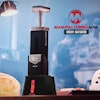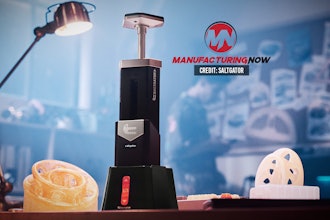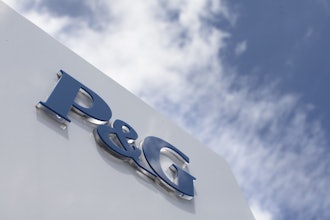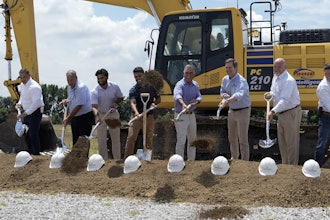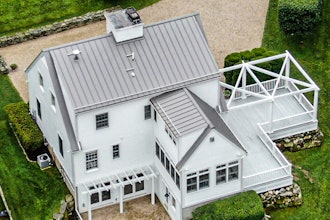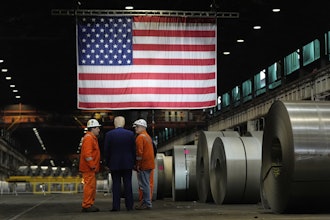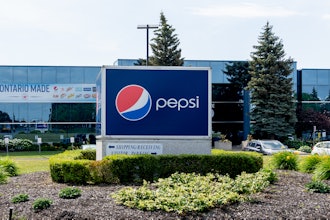Metrics and lean manufacturing helped turn this family-owned business from a fast-growing, but disorganized player into a world-class leader in the booming market for vinyl replacement windows and doors.
| Republic's award-winning facility (upper left); Kevin Heylin, vice president of manufacturing (center); and Senthil Rajamanickam, director of window operations and maintenance (above). |
But the company had much to learn before it turned to these techniques. A leader in the manufacture of custom replacement vinyl windows and doors for residential and new-construction markets, Republic had long operated out of two cramped Chicago facilities. Company executives blamed the operation's many inefficiencies on the outdated workspace. A single, large facility, they originally believed, would solve the space problem and improve efficiency.
To that end, Republic began a process that resulted in a new, state-of-the-art, $30 million manufacturing facility. In 1997, it moved into its custom-designed 375,000-sq.-ft. building on Chicago's Goose Island, an inner-city industrial area formed by two branches of the Chicago River. The eye-popping facility received immediate acclaim for its modern, efficient architecture, and became a focus of local and national media attention. But it was not the answer to the company's production problems.
"Everyone thought when we moved into this building, things would be better," says Rajamanickam. "But all we did was move something that was inefficient to something we thought would be more efficient because the facility looked better."
Instead of solving the company's problems, the spacious new facility only magnified them. Inefficiencies in production and hiring that had existed at the old facilities - the entrenched results of years spent reacting to the demands of the booming home-improvement market - had made the move intact. A few months in the new headquarters were enough for Republic executives to realize that far more than a new facility was needed to effect serious production improvements. Company president Ron Spielman soon understood that Republic had been fortunate to become a leader in spite of itself, but now needed to make fundamental changes.
Republic's inefficiencies had much to do with poorly defined processes and a reactionary approach to hiring. The nature of the custom replacement-window business - strong year-round sales punctuated by extremely busy periods - lulled the company into believing its main objective was do whatever was needed to get product out the door. Focusing on exactly how that happened was not a big part of the program. The result: "We often didn't send complete orders," says Rajamanickam. "We also had shipping problems. And we had high turnover. We were constantly chasing HR to get us more people," he says. "Workers would come here for a couple of days, then leave. We couldn't pay wage rates with any incentives because we didn't understand our process." The company used temporary workers to fill gaps, and "turnover was every day," says Rajamanickam.
Among the many problems created by this approach was a constantly changing workforce devoid of company loyalty. Spielman backed a decision to hire consultants to help make changes. "If he hadn't been for it, it wouldn't have worked," says Rajamanickam. "We all still would have been firefighting."
The consultants introduced the company to lean manufacturing principles and explained how to use metrics to define workflow and production expectations. Rajamanickam says he and the company's other manufacturing executives caught on quickly and set about to revamp the company, building on the consultants' initial guidance.
One of the first actions they took was to use a Kaizen approach to examine and reconfigure operations. Rajamanickam pulled out his stopwatch and began timing all the processes needed to make one window in the company's Ramguard line. He quickly saw that "nobody was balanced," he says. Faster workers routinely lost time waiting for slower workers, holding daily per-man window output to five units. By totaling productive and non-productive time on the job and dividing by the number of workers, Rajamanickam determined that Ramguard workers should have been able to produce twice as many windows.
"We came up with 11 units per man," he says, "so we explained that the same 20 people who used to make 100 units per day were now going to make 220 units. Also, we were going to start a bonus program, and we would have incentive payouts and cross training. Everything was new."
Rajamanickam presented the changes at a line meeting where "everyone thought we were crazy," he says. "I was skeptical too because we had never done this. This tested my leadership skills to get up in front of people and convince them to jump through hoops for me."
But it worked. By defining and timing assembly tasks, says Rajamanickam, "We went from five windows to 10.7 per man on the first day. It was amazing. People were high-fiving each other. They couldn't believe it." Now, instead of working 50 hours a week, including Saturdays, the crew would work only 40 hours a week, but would make more money. The improvement strategy, which also included lean rearrangements of work cells and workflow, became known as "blasting" a line.
The value of blasting seemed obvious to management, but its company-wide success depended on culture change. Workers would now spend less time on the job and get paid more, but the company was asking for a greater commitment. Teamwork was critical, as was learning the larger process of window and door manufacturing.
"People were accustomed to doing only what they did and didn't want to help each other," says Rajamanickam. "Now we said, 'Lay down your guard and help the other person get it out.'"
There was also resistance from the workers' union, which was suspicious of the company's plan to reduce worker hours. Workers and union soon realized, however, that blasting would preserve jobs, not eliminate them. Both groups soon encouraged the company to speed up the blasting process.
Republic's plan was, indeed, to blast all of its lines and create well-trained teams for each - teams that would be held solely responsible for their output. In contrast to its previous, unstructured approach, the company now created incentives for workers to learn more, do more and grow within the company. The days of temporary-labor dependence were over.
"This concept of the 100% team is what we didn't have in the past," says Kevin Heylin, vice president of manufacturing. "We had people operating within their own silo, in their own environments with nothing integrating them. They were operating independently. Now, we all speak the same language and share the same initiatives."
Once workers started earning extra money, says Rajamanickam, "they realized this could work. That same Ramguard line, three years later, is producing 16 units per man," he says. "They're at the top end, and they're making more than $3 per hour bonus." This does not include Star pay, he says, which provides an additional 20 cents per hour for mastery of each cell in a line and for mastery of other lines. "This is part of the cross-training initiative," says Rajamanickam. "Before, nobody knew what the other was doing. Now they all have to know what everybody is doing. That's how you build quality into the process."
Monetary incentives are tied to productivity, quality - internal and external, based on customer-reported defects - safety, and material yield, the costliest aspect of window production. The factors are weighted by percentages. And workers pay close attention to each, not only because they affect their income but because each blasted line at the facility is "its own cost center," says Rajamanickam. "They are their own company within a company. Now they tell us what they're going to save."
Rajamanickam says all production information is benchmarked, including key metrics regarding defects and material yield, and used to create tracking databases, which is published for employees. The process leads to healthy competition between lines, as well as reduced defects and increased output. It also enables the company to forecast with accuracy. "Every step in every product line is measured and put into a one-piece flow matrix," says Rajamanickam. "Then we evaluate what the line can do. Before, we didn't know what its capacity was. We would shoot out numbers and just put more people into it. Now, if we add a person, we know exactly how many units we're going to get." He calls creation of the standards "liberating," noting that in three years, the process has:
• Freed up 50% in operating space
• Boosted output by 50%
• Boosted wages by 50%
• Increased material yield by 30%
• Reduced waste by 75%
The precision with which the company has defined its processes has also helped it better define how it buys and uses equipment. It now knows precisely when to add equipment and when to eliminate it. Republic recently removed automated equipment from one line, for example, and replaced it with skilled employees. "We've learned that cross-trained people are sometimes better than a machine," says Rajamanickam.
The company believes such efforts will enable it to soon reach output of 750,000 units per year (windows and doors), up from its current 500,000, and $180 million in sales, up from its current $80 million. Rajamanickam says the key to reaching this level is continuing the blast process for all lines, as well as "understanding the people behind the process and knowing what they can do."
Heylin agrees, stressing that the company's gains are the result of having the right people. "You can have the best plan in the world," he says, "but if you don't have the right people to implement and execute the plan, you will fail. We failed, not just because I didn't have the software solutions, but because I didn't have the people. Without people who can execute and perform, I won't be better off with those systems."
Credit for changing Republic's workforce from an ongoing problem area to the company's chief asset goes to the thoroughness of the blast process, says Heylin, and to the company's decision to improve communications by printing line-worker directions and training manuals in Spanish.
"The manufacturing side of our workforce is largely Hispanic," says Amy Zimmerman, director of marketing, "and we used to fight the language issue. They should know English, but the truth is they don't speak it well enough to understand the complicated principles they need to know. Now, they can read and understand in their own language. At the same time, we help them raise their English standards."
The company also raised its hiring standards. Applicants are now required to have mechanical aptitude, basic math and English skills, computer literacy, good hand-eye coordination and high manual dexterity. "Before," says Zimmerman, "if your cousin worked here, you were in."
Safety is another area that has benefited under the revitalization. "We associated safety with the blast process," says Heylin. "It's included in our gain-sharing opportunities. When we create study guides to train people, we also give them the criteria as to why the operation should be that way and how we do it safely. Now, we have 500 employees in a manufacturing environment who are responsible for the safety and well-being of each other. The results have been tremendous. The fewer incidents we report on our workmen's comp., the greater our premium refund, which we share with the employees."
Heylin says OSHA-reportable incidents - typically strains, contusions and lacerations - are down 65% over the past three years. In the same period, company business increased 40%.
Impressive as these number are, Heylin stresses that they're not taken for granted. "We don't want to become blinded by our success," he says. "We can feel good about our safety programs and productivity, but what do we still have to do strategically, to keep pulling for? Zero accidents and zero defects."
That vision is encouraged across all departments. And Zimmerman says that, based on how two departments recently joined forces to solve a unique, long-running problem, it's working.
"We supply our [dealer] customers with small sample windows in a case with materials that allow them to demonstrate in the home," she says. The kits are a necessary sales tool, she adds, but had never received proper attention within the company. Salesmen complained about the kits' availability, consistency and quality, mostly because of the way they were manufactured.
"A customer would call up wanting a certain window sliced in half to show the inner workings," says Zimmerman. "And someone would write an order. Then 15 people would meet to make one corner cut of a window because a dealer decided he needed it." The haphazard process resulted in a spotty collection of kits that poorly represented Republic. When Zimmerman saw the blast-related gains in production, she felt the samples could use the same treatment, and met with Rajamanickam to seek a solution.
"That line had no standards," he says. "There were no bills of materials and we had no idea what we were making." But by pooling information and resources, the two departments solved the problem. "We learned about her world and she learned about ours," says Rajamanickam. "We meshed it together to make, ultimately, a defect-free product." Now, when Republic gets a new customer, says Zimmerman, "The samples are always correct and the company is able to put its best foot forward."
Both point to the samples project as further evidence Republic will meet its ambitious goals. With the standards-based system, says Rajamanickam, "Now, nothing is a myth. If somebody is to build a double-hung window, there's a recipe for it. We have printed standards at the workstations and we have them in study guides that workers can take home. And they get tested on them. The people who fought it first are for it now because they're getting more money and they're feeling successful. They're seeing the improvement. Once they grasped that, and we saw that they grasped it," he says, "we knew right then we had found something great."

